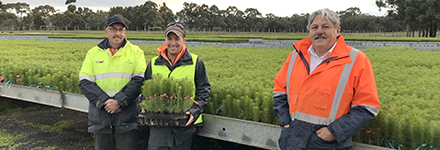Plantation forestry participation in the Carbon Farming Initiative in south west Victoria will not cause a rapid expansion of plantation estate however, it will support the state’s emission reduction goals, a new Ernst & Young report has shown. Source: Timberbiz
Ernst & Young’s report, “Capturing the full benefits of plantation forestry in the Green Triangle” released today by the Green Triangle Forest Industries Hub, highlights that existing investment constraints, typically the high price of agricultural land and proximity to processing facilities, will hinder expansion even with carbon payments under the Federal Government’s Emission Reduction Fund.
Carbon payments have been identified in the GTFIH strategic plan as an enabler for future investment however the research shows that alone it is unlikely to cause a “rapid expansion” of plantation estate, which currently only utilises less than 6% of total Green Triangle land area.
The Victorian side of the Green Triangle is currently not included in the CFI, with South Australian forest companies in the Limestone Coast included in the scheme among four other forestry hub zones nationwide (SW Western Australia, N/NW Tasmania, NE New South Wales, SW Slopes of New South Wales, and SA side of the Green Triangle).
GTFIH chair Ian McDonnell said Ernst & Young’s research illustrated that land values in south west Victoria were the highest of any national plantation region.
“Forestry in south west Victoria can only compete for land at the margin with profitability remaining low. It is predicted that just over 4000 hectares of new plantation will be established in the region over the next 30 years – that is 0.2% of the total available land,” Mr McDonnell said.
The study shows that the carbon price would need to double, reaching $30/tCO2e, to close the investment gap. The price of carbon has remained about $14-$16/tCo2e for the past five years which when applied to a plantation investment of an average timber species and rotation length the increase in return is only one to 2%.
“The study shows that the carbon price would need to climb above $25/tCo2e to deliver a positive return for investors,” Mr McDonnell said.
“Adding to this, the state’s water management plans provide fair and equitable use of the re-source for all primary industries, meaning carbon payments will not be a major catalyst for new plantation growth in the region.
“Taking this into account, forest plantation will remain unviable with a risk of divestment or relocation to other high rainfall regions.”
Mr McDonnell said the report showed that extending full participation in the ERF to south west Victoria ensured plantation environmental benefits are duly recognised, whilst enhancing the sector’s contribution to Victoria’s emission reductions efforts.
“The Green Triangle has set the target of expanding the plantation estate by 200 million trees over the next decade, utilising every part of every tree we harvest. Victoria will play a valuable contribution in this goal, using sustainable land use practices to protect our renewable water resource as we identify strategies to unlock new investment and collaborate with other land managers, such as dryland farmers and the dairy sector,” he said.






